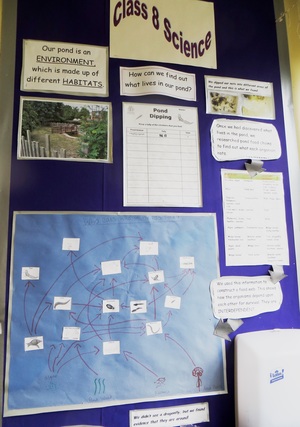
How PJS use their pond dipping
Published on 2015-04-01 by Gill Hickman
All children love pond dipping and having got your school pond, you must use it!
Children need to be taught how to pond dip. There are rules, some more obvious than others, and without guidance, children 'fish' for newts and leave all the invertebrates high and dry by the pond edge or in their net! Having learnt the techniques children can have fun.
Eco-Schools (and Ofsted) expect children to learn form this experience and any pond dip is any opportunity to not only have fun but to produce some evidence of learning. So what can you do? Whilst at the pond, children could draw or photograph their minibeasts/invertebrates; they can identify them using keys and draw up a tally on a pre-prepared chart to show their numbers (see PJS example).
In the classroom, they could use their pond experience to consider key words eg 'habitat' and 'environment'; they could write a paragraph of descriptive English; they could draw bar charts/ pie charts/ histograms (depends on age and ability).
All children could (with a teacher and some research) figure out 'what eats what' and try to draw their own food web. Help children's eventual GCSE by instilling in them that the arrows go from the smallest to the larger - in the direction of energy flow.
Bright or older children could consider the feeding relationships in the pond further! There should be more green plants (producers) than anything else. Then there should be more primary consumers or herbivores than secondary consumers or carnivores. Interestingly, children often obtain more of the creatures at the highest level in a food chain, simply because they seek them out and fish for them!
